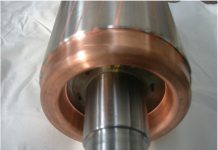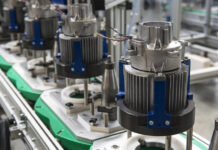A new manufacturing process yields highest conductivity copper composites at bulk scale. This is a discovery of researchers at Pacific Northwest National Laboratory (PNNL): they have increased the conductivity of copper wire by about five percent. Higher conductivity means that less copper is needed for the same efficiency, which can reduce the weight and volume of various components that are expected to power our future electric vehicles.
The laboratory teamed with General Motors to test out the souped-up copper wire for use in vehicle motor components. As part of a cost-shared research project, the team validated the increased conductivity and found that it also has higher ductility-the ability to stretch farther before it breaks. In other physical properties, it behaved just like regular copper so it can be welded and subjected to other mechanical stresses with no degradation of performance. This means that no specialized manufacturing methods are necessary to assemble motors-only the new advanced PNNL copper composite.
The technology can apply to any industry that uses copper to move electrical energy, including power transmission, electronics, wireless chargers, electric motors, generators, under-sea cables, and batteries.
General Motors Research and Development engineers verified the higher conductivity copper wire can be welded, brazed, and formed in exactly the same way as conventional copper wire. This indicates seamless integration with existing motor manufacturing processes.
«To further lightweight motors, advances in materials is the new paradigm – said Darrell Herling of PNNL’s Energy Processes and Materials Division. Higher conductivity copper could be a disruptive approach to lightweighting and/or increasing efficiency for any electric motor or wireless vehicle charging sytem».







